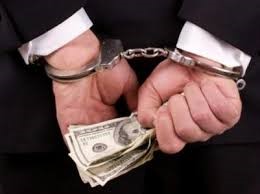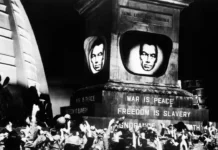Financial executives are stealing more money at all levels in the banking, brokerage, and insurance industries than ever before. These thefts are happening publicly in the U.S. and worldwide as brazen politicians, bankers, and other complicit white-collar criminals abuse a weakened legal and financial regulatory systems to steal money from shareholders and all levels of government.
These respected members of the business and investment communities in the U.S. and overseas failed to pay taxes, stole public money, and deprived schools, public health, and governments of the ability to build infrastructure. As part of the same process, they destroyed public confidence among investors, the public, and financial regulators responsible for policing the global financial industry.
In two new books, Big Dirty Money by law professor Jennifer Taub and Kleptopia by the British investigative journalist Tom Burgin, the scope of this unprecedented theft of public money and the development of criminal enterprises needed to pull off the frauds, corruption of public officials, and financial management are all documented.
As seen in these books and financial industry trade publications, the more depressing evidence is that financial regulators, attorneys general, and internal compliance officers are complicit in the surge in white-collar financial services violations. In most cases, they fail to make serious prosecutions at the corporate and individual levels, and when they do, it is often years after the thefts have occurred.
 While these books describe money laundering and large global criminal operations, there is a sign of financial reform. In Seeking Virtue in Finance, JC de Swaan, an economics lecturer at Princeton University, makes the case that a new generation of “well-intentioned finance professionals” at the individual firm level can redirect the inherent conflicts-of-interest inherent in the financial services industry. If these changes occur, they can better serve clients and benefit society. Doing this will require a serious change in the financial industry’s culture, but de Swaan provides case studies that show this is actually happening.
While these books describe money laundering and large global criminal operations, there is a sign of financial reform. In Seeking Virtue in Finance, JC de Swaan, an economics lecturer at Princeton University, makes the case that a new generation of “well-intentioned finance professionals” at the individual firm level can redirect the inherent conflicts-of-interest inherent in the financial services industry. If these changes occur, they can better serve clients and benefit society. Doing this will require a serious change in the financial industry’s culture, but de Swaan provides case studies that show this is actually happening.
Here are how these three books describe the current state of the global and national investment business.
BIG DIRTY MONEY: “CHEATING IS THE NEW NORMAL”
In her book, Big Dirty Money, Jennifer Taub describes numerous cases where white-collar executives in the financial industry escaped jail terms or received lenient sentences. The legal system failed because prosecutors said they could not prove intent. This is the legal standard that effectively benefits the criminals and provides cover for prosecutors who opt to drop or minimize criminal cases.
If this sounds familiar, there are some great reasons why. In most white-collar criminal cases, the defendants are rich, white men with a history of committing mail, wire, and bank fraud, embezzling pension funds, lying in court, obstructing justice, bribing public officials, laundering money, or cheating on taxes. The current situation is so bad that Taub said, “cheating is the new normal.”
In one case, Taub describes a broker who got a get-out-of-jail-free card from a sympathetic judge. “Taub’s account of Deborah Kelley, a broker who admitted to paying more than $100,000 in bribes to a portfolio manager with New York’s giant state pension fund and then lying about it. She faced up to five years in prison but instead was sentenced to home confinement and probation because the judge thought she was “a good person,” according to a book review in the New York Times.
White-collar crime is a global crime and is evident at the highest government levels in some democracies and most dictatorships. It is evident in the Trump administration and the 2008 mortgage fraud cases that escaped prosecution from the Barak Obama administration under Attorney General Eric Holder, who failed to prosecute bank or real estate executives for their frauds.
KLEPTOPIA—THE RISE OF GANGSTER STATES
The looting of national resources and entities is the fastest way to become phenomenally rich. It is why dictatorial and autocratic regimes in Asia, China, Africa, Paris, London, New York, and Russia remain in power and have the ability to bribe local politicians and police, and kill opponents. It is why top political leadership remains in control in countries that face systemic corruption. It is why Vladimir Putin is ranked as the richest man in the world, even though he has never been in business. It is the model Trump is following in his business-political career.
 Kleptopia: How Dirty Money is Conquering the World, by investigative reporter Tom Burgis, tells how dictators, global bankers, and the top managers in the financial world loot public property and tax coffers for their private gain and how they use the money to remain in power and extend these corrupt networks worldwide. In essence, they create “gangster states,” whose goal is to gain and preserve political power at any cost. It is why Trump cannot release his taxes since it would show how dictators and their proxies became his bankers.
Kleptopia: How Dirty Money is Conquering the World, by investigative reporter Tom Burgis, tells how dictators, global bankers, and the top managers in the financial world loot public property and tax coffers for their private gain and how they use the money to remain in power and extend these corrupt networks worldwide. In essence, they create “gangster states,” whose goal is to gain and preserve political power at any cost. It is why Trump cannot release his taxes since it would show how dictators and their proxies became his bankers.
Kleptopia contains case studies from four criminal schemes worldwide. This book reads like a novel, but it is top-notch journalism. Burgis goes into great detail about its criminal protagonists and their white-collar, respectable enablers in finance, law, accounting, government, and police who all allow kleptocrat gangs to operate and prosper as financial regulators look in the other direction.
SEEKING VIRTUE IN FINANCE: CHANGING A CONFLICTED CULTURE
In Seeking Virtue in Finance, JC de Swaan of Princeton University addresses the “social value of finance” and believes that finance can work toward a common benefit serving customers’ interests. He believes the industry has an inherent conflict-of-interest between selling products that do not meet its customers’ needs. In this practice, the quest for personal bonuses and corporate profits trumps the interests of individual investors.
The main problem is that financial professionals must be salesmen, meet sales quotas, make money, and sell products that are difficult to explain, de Swaan writes. Simultaneously, advisors must be considered trusted advisors to their less-sophisticated clients. As a result, advisors have conflicted sales and advisory relationships that jeopardizes the fiduciary relationship.
This inherent conflict-of-interest is obvious in broker-client relationships where a broker sells a risky investment to a naïve or underfunded client. But how does this conflicted relationship work between a market-maker and an underwriter? Does the market-maker have to disclose whether it is long or short in a complex trade?
Or, should it consider its client sophisticated enough to gauge the risk in a bull or bear market? This happened when Goldman Sachs solicited clients to take long positions in a credit default swap, after hedge fund manager Paulson & Co. picked subprime mortgage tranches the hedge fund expected to fail in 2007.
Here, de Swaan describes that Goldman found two European banks to take the long side of the trade without disclosing that Paulson had selected about half of the portfolio’s mortgages that he predicted would fail. Goldman also failed to disclose that it was a short holder in the mortgages and would profit from the portfolio’s price declines. When the smoke cleared, Paulson made about $1 billion, while Goldman’s bank clients lost about the same amount. Goldman eventually settled with the SEC by paying a fine of $550 million.
While these abuses are well-known, a few other financial firms have adopted pro-investor fee arrangements and corporate structures. These case studies of small firms provide the ammunition for de Swaan’s argument that investment firms can do good at the company-level if they adopt an entirely new culture than the one commonly seen by the majority of global and national investment firms.
As examples, he cites how Vanguard (a mutual company owned by its shareholders) pioneered low-cost index funds while minimizing fund expenses. Dodge & Cox (a private firm wholly owned by its current employees with no marketing and overseas offices) bases its compensation primarily on fixed management fees tied to assets under management. Other firms, such as Orbis Investment Management, and on a more limited basis, Fidelity and Alliance Bernstein, also have adopted fulcrum fees that pay off when a manager beats an index and penalizes them when they don’t meet the bar.
Watermark Group, a hedge fund in Princeton, New Jersey, has broken the industry’s negative reputation by adhering to being transparent, avoiding perks, and, most importantly, paying back investors when the fund suffered losses or failed to beat benchmarks.
De Swaan provides numerous examples of financial mismanagement for pure profit purposes. Private equity firms, such as Blackstone, are cited for dividend recapitalization schemes as paper manipulations to increase internal rates or returns without concern for social wealth creation and by relying on financial engineering schemes. He also addresses the pros and cons of shareholder activism, ESG, and SRI investing. Implementing change in management should be done by encouraging co-workers to “act virtuously” in their daily business activities by focusing on their fiduciary responsibilities to create social value.
 Investment firms can do this through servant leadership: the practice of empowering co-workers to make their own pro-firm and pro-society decisions over their professional careers. Servant leadership is the opposite of being selfish. Instead, it is goal-focused so that it benefits the individual, the firm, and society. Servant leadership requires that managers treat employees respectfully.
Investment firms can do this through servant leadership: the practice of empowering co-workers to make their own pro-firm and pro-society decisions over their professional careers. Servant leadership is the opposite of being selfish. Instead, it is goal-focused so that it benefits the individual, the firm, and society. Servant leadership requires that managers treat employees respectfully.
De Swaan’s book is a detailed presentation of case studies for re-shaping the corporate culture of the very competitive, predatory, and profitable financial services industry. He shows that pro-society and humanistic management changes at small and large firms can profit while serving the broader public interest. This type of management is the opposite of giant banks that engage in money laundering, financial fraud, and criminal behavior.
The big question is whether human greed can be re-channeled to humanistic and social wealth, creating actions. Unfortunately, that is something the financial business has not even addressed at the industry level.











